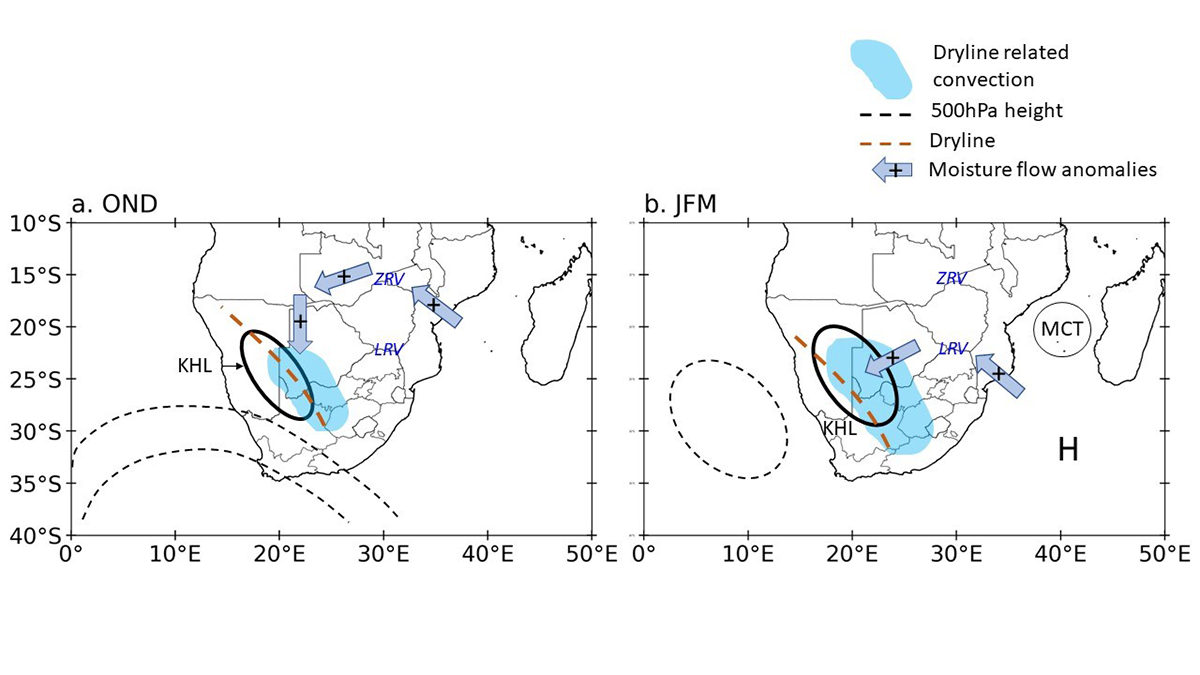Editors’ Highlights are summaries of recent papers by AGU’s journal editors.
Source: Journal of Geophysical Research: Atmospheres
The dryline is a narrow zone of extremely sharp moisture gradient. It is also usually called the “moisture front”, resembling the cold and warm fronts of thermal contrasts. Drylines occur in many regions of the world in late spring and summer seasons, such as the Great Plains of the United States, India, and northern China (Schaefer, 1986, p. 549-572). Usually, drylines are associated with convective developments or even severe thunderstorms, such as tornados and squall lines.
van Schalkwyk et al. [2023] performed a comprehensive study of drylines over the western Plateau of southern Africa from 2010 to 2021. They demonstrated that in austral early summer (shown in left figure panel) moist air from the Indian Ocean flows through the Zambezi River Valley and meets with dry air from the west, leading to the formation of drylines. In austral late summer, the channel of moist air shifts southward to the Limpopo River Valley (right figure panel). Using lightning data, the authors found that seventy-six percent of drylines in austral summer (October-March) were associated with thunderstorms, which locate at the moist side of drylines. They also show that dryline-induced thunderstorms are usually associated with a trough at 500 hectopascals (hPa).
This is the first comprehensive study describing dryline formation in southern Africa and its role in triggering thunderstorms. The work makes an important contribution to our understanding of drivers of deep convection over southern Africa.
Citation: van Schalkwyk, L., Blamey, R. C., Gijben, M., & Reason, C. J. C. (2023). A climatology of dryline-related convection on the western plateau of subtropical southern Africa. Journal of Geophysical Research: Atmospheres, 128, e2023JD038966. https://doi.org/10.1029/2023JD038966
—Yongyun Hu, Editor, JGR: Atmospheres

